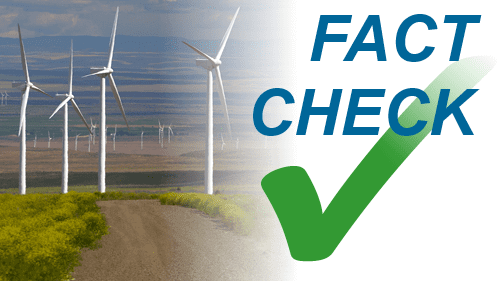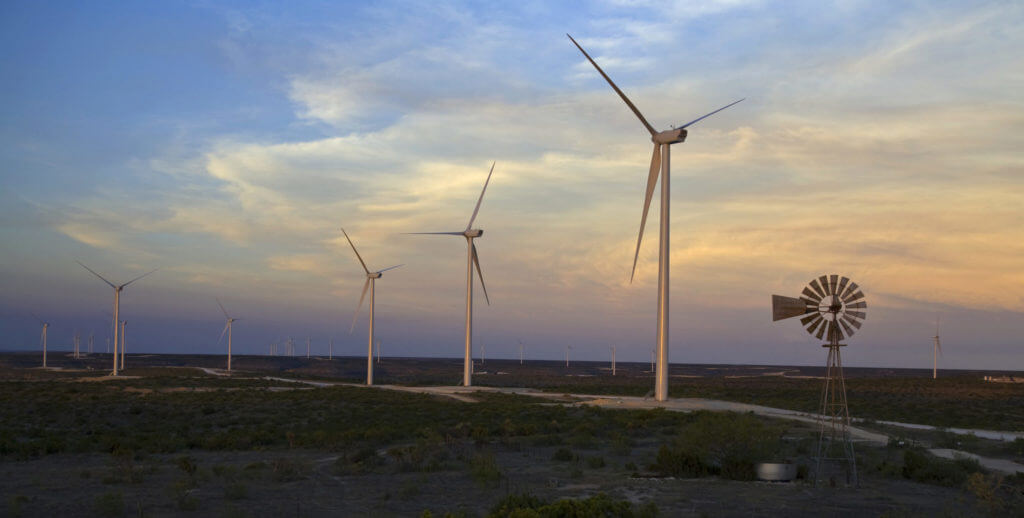Three Studies Confirm: Wind is an Affordable Solution for Cutting Pollution
Three recent analyses confirm that wind energy is one of the lowest cost options for reducing carbon emissions, but some have attempted to take another analysis out of context to argue that this is not the case.
The recent positive news about wind energy includes a report from Wall Street investment firm Lazard, which confirms that wind energy’s recent cost declines have made it the lowest cost option for reducing emissions. In fact, Lazard’s results indicate that wind’s cost is lower than all other new generation options, making wind a win-win for consumers and the environment by giving wind a negative cost of reducing emissions. Additional positive news comes from a draft EU report that shows that wind is the lowest cost energy source once the public health and environmental costs of other energy sources are accounted for. Finally, a recent report from the U.S. Department of Energy confirms that wind’s costs, as reflected in signed utility wind purchase contracts, have fallen by more than half over the last five years. Moreover, the report finds that over the life of a project, wind is by far the lowest cost option once expected increases in the price of fossil fuels are taken into account.
Undeterred by these findings, some have misrepresented a rough estimate prepared by the Midwest grid operator (MISO) of the potential costs of complying with EPA’s pending Clean Power Plan to limit emissions of carbon dioxide from existing power plants. Some anti-wind groups have taken the results out of context, ignoring important caveats in the draft in an effort to attack wind energy. MISO has acknowledged the limitations of its initial analysis and has stopped presenting those results because others have taken the numbers out of context, but that has not stopped some anti-wind groups from continuing to misrepresent the results.
As a result, we feel compelled to set the record straight by correcting the cost estimate to account for a number of critical limitations in the estimation method, including several that MISO has acknowledged have a significant impact on the estimate. As shown in the table below, these corrections bring wind’s calculated cost of emissions reductions down by a factor of 5 from the initial estimate. MISO has not yet released the full details of its methodology, so there would likely be additional corrections to the estimate if those details were known.
| Step toward the correct result | $/ton |
| Initial estimate listed in presentation that MISO has stopped using | $237/ton |
| Remove loophole that does not count emissions from new natural gas plants so that wind gets credit for its full emissions reductions | $107/ton |
| Fix dispatch model to accurately reflect that wind is displacing more coal than MISO’s estimate, improving wind’s emissions benefit | $77/ton |
| Use more accurate/recent capital costs for wind (MISO uses $2038/kW for wind capital costs, LBNL reports average installed cost of $1630/kW nationwide in 201) | $64/ton |
| Start wind build in 2020 when the Clean Power Plan requirements begin, instead of 2016 as assumed by MISO, reducing the net present value of the wind installation cost. MISO modeled other 111d solutions as starting in 2020, putting wind at a cost disadvantage | $56/ton |
| Account for future wind capital cost reductions (figure based on DOE projected wind capital cost reductions by 2030) | $49/ton |
| Use the cost of gas delivered to power plants instead of Henry Hub gas prices | $48/ton |
The fact that utilities in MISO are signing wind purchase contracts at costs below the cost of competing generation proves that wind actually has a very low or even negative cost of reducing emissions. Moreover, expected increases and volatility in the price of competing fuels make it even clearer that wind energy is the lowest cost generation option for reducing emissions in the long term, as shown in the chart below from DOE’s report.

A number of utilities in MISO have recently spoken at length about how wind is saving their consumers money, even without accounting for wind’s public health and environmental benefits. For example, President and CEO of Xcel Energy’s Northern States Power David Sparby announced 600 MW of new wind purchase contracts by explaining that “Wind prices are extremely competitive right now, offering lower costs than other possible resources, like natural gas plants. These projects offer a great hedge against rising and often volatile fuel prices.”
Similarly, when MidAmerican Energy, the investor-owned utility controlled by investment icon Warren Buffett, received state approval for a major 1,050 MW wind farm in Iowa, the utility stated: “The expansion is planned to be built at no net cost to the company’s customers and will help stabilize electric rates over the long term by providing a rate reduction totaling $10 million per year by 2017, commencing with a $3.3 million reduction in 2015.”
No one is likely to have a better sense of the costs of different energy sources than utilities, who must make those comparisons on a daily basis. They are the ones who will be ultimately responsible for cost-effectively bringing their power systems into compliance with the pending Clean Power Plan.



